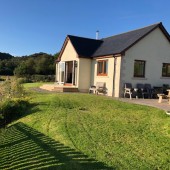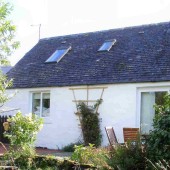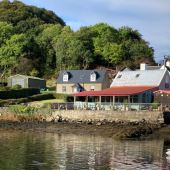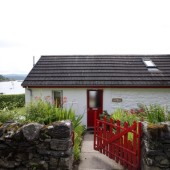Part 8
 In this neighbourhood one is never far from the sea, and our marine biology is exceptionally interesting. The following information has been sent to us by someone who has been working on research in these waters. An unusual and noteworthy feature of this part of Argyll is the very small range of the tides. Even the spring tides, occurring just after new and full moons, have an average range of only 4—S feet, and the intervening neap tides, associated with the first and third quarters of the moon only rise and fall about a foot or so. The marine fauna and flora of Loch Sween and its off shoots (the marine inlets off the main loch such as Caol Scotnish, and the Linnhe Mhuirich to the west of Taynish peninsula with its access through the rapids to the south) is extremely interesting and it has attracted a lot of attention from marine biologists. During the period of the second world war a team of scientists from Edinburgh University and Millport Marine Laboratory carried out some fertilisation experiments in the loch with the aim of improving sea fisheries—an early attempt at ‘fish farming’ which is now being investigated further by other scientists near Ardnamurchan and in Loch Ewe. More recently a detailed descriptive account of the intertidal plants and animals of the area has been published from Millport Marine Station and this account indicates that as well as the usual fucoids, tangles, barnacles, limpets, snails, etc., found on Scottish coasts, Loch Sween has unusually rich populations of rarer forms such as sponges, ascidians, hydroids, and certain rare red and green seaweeds - the Linnhe Mhuirich and parts of Caol Scotnish being especially rich in this respect.
In this neighbourhood one is never far from the sea, and our marine biology is exceptionally interesting. The following information has been sent to us by someone who has been working on research in these waters. An unusual and noteworthy feature of this part of Argyll is the very small range of the tides. Even the spring tides, occurring just after new and full moons, have an average range of only 4—S feet, and the intervening neap tides, associated with the first and third quarters of the moon only rise and fall about a foot or so. The marine fauna and flora of Loch Sween and its off shoots (the marine inlets off the main loch such as Caol Scotnish, and the Linnhe Mhuirich to the west of Taynish peninsula with its access through the rapids to the south) is extremely interesting and it has attracted a lot of attention from marine biologists. During the period of the second world war a team of scientists from Edinburgh University and Millport Marine Laboratory carried out some fertilisation experiments in the loch with the aim of improving sea fisheries—an early attempt at ‘fish farming’ which is now being investigated further by other scientists near Ardnamurchan and in Loch Ewe. More recently a detailed descriptive account of the intertidal plants and animals of the area has been published from Millport Marine Station and this account indicates that as well as the usual fucoids, tangles, barnacles, limpets, snails, etc., found on Scottish coasts, Loch Sween has unusually rich populations of rarer forms such as sponges, ascidians, hydroids, and certain rare red and green seaweeds - the Linnhe Mhuirich and parts of Caol Scotnish being especially rich in this respect.
The nearby rocky shores around Carsaig bay and Loch-na-Cille on the open coast of the Sound of Jura also have a good variety of marine plants and animals. The area is not particularly good for sea fish but there is excellent lobster and clam fishing in parts of the Sound of Jura.
Natural oysters have long been known to exist in Loch Sween. In particular the Linnhe Mhuirich, a shallow and land-locked arm of the main loch, provides the high summer temperature and rich feeding which favour the growth and breeding of this valuable animal.
Towards the end of the last century the proprietors of Taynish and Poltalloch attempted to improve the beds and to set up a system of oyster culture on a commercial scale, but this enterprise lapsed. However since the second world war scientists from the Marine Station at Millport have carried out investigations and experiments aimed at finding the conditions necessary for a successful fishery in the loch and as a result a grower has taken out the fishing rights and the past few years has been operating a commercial fishery in the Linnhe Mhuirich. The oysters are sent to markets in Scottish and English towns and to the continent where they are high esteemed and there is now a prospect that a carefully controlled fishery may become fully established.
We have left to the end a word about the great women’s organisation to which the compilers of this history belong. The Tayvallich branch of the Scottish Women’s Rural Institutes was founded in 1929, with its first meeting in December of that year. Mrs. Crawford was the first president, and she continued in office until, after her husband’s death, she left the district in 1936, leaving the Institute a flourishing and good-going concern to her successors. The membership at first was 20, of which four or five still live here, while today we have 33 members. This increase is partly because with better transport more women living farther away from the village are able to get to meetings; it is not, alas, a sign of an increase in population.



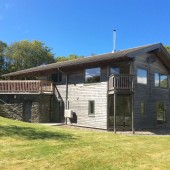

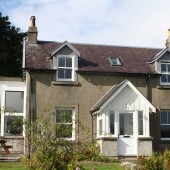
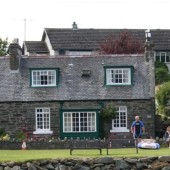
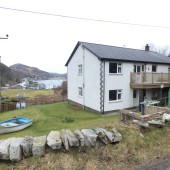
_baef36edc53bdd009ca06069d3b23fda.jpg)
